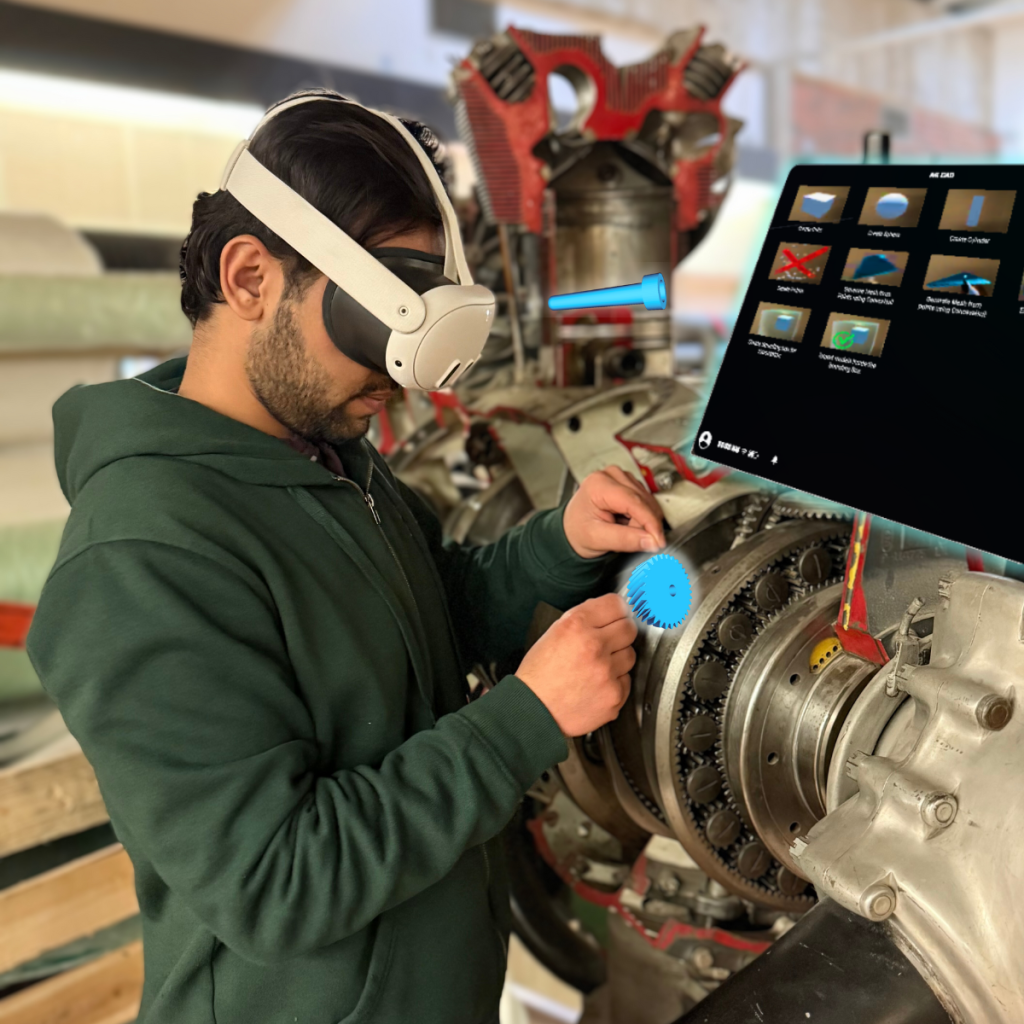Submission 2025
| Submitted by: | Muhammad Talha |
| Department: | Mechanical Engineering |
| Faculty: | Engineering |
This image portrays a user wearing a Meta Quest 3 headset, interacting with a virtual CAD model superimposed onto a real jet engine component through an Augmented Reality-based CAD (AR-CAD) interface. The floating UI and holographic parts illustrate how AR-CAD enables designers to explore spatial relationships, identify design issues early, and assess fit within real-world assemblies before manufacturing. This approach not only lowers barriers to CAD adoption by providing intuitive 3D interaction but also promotes sustainable engineering practices by minimizing reliance on physical prototypes. The image captures the future of design workflows, where immersive visualization supports better decision-making, faster iteration, and environmentally responsible development.
Was your image created using Generative AI?
No.
How was your image created?
The image was created by capturing real-world interaction with AR-CAD, an Augmented Reality CAD system developed entirely by me. Using a Meta Quest 3 headset, CAD models were designed in a real environment and exported as STL files. The AR-CAD user interface was originally built in Unity, and a screenshot of the UI was taken directly from the Unity environment for incorporation. A photograph of the user interacting with a Wright Cyclone 14 radial engine was captured using an iPhone 16 Pro Max. The backgrounds of the exported CAD models were cleaned, and the meshes were overlaid onto the photograph. Final composition and enhancements, including highlighting the CAD overlays to reflect the AR-CAD application experience and ensuring proper image quality and DPI, were performed using Canva Pro. This workflow allowed for an accurate simulation of the live AR interaction between virtual models and the real-world engine.
Where is the image located?
The image was created on the second floor of the Mechanical Engineering Building at the University of Alberta, in front of Laboratory MECE 2-9. It features the Wright Cyclone 14 radial engine (Type 2600) on display, which served as the real-world backdrop for superimposing the virtual CAD models using the AR-CAD system developed in our research.

